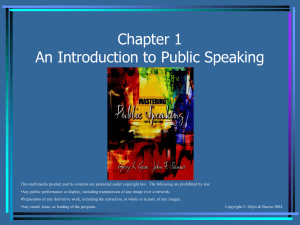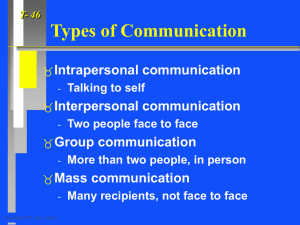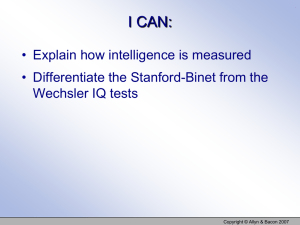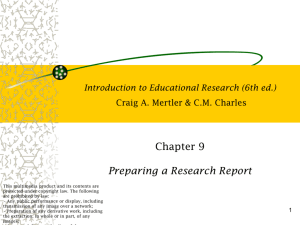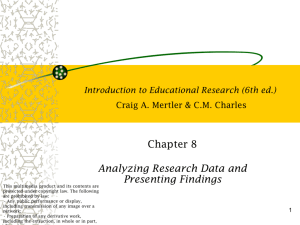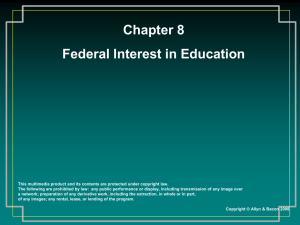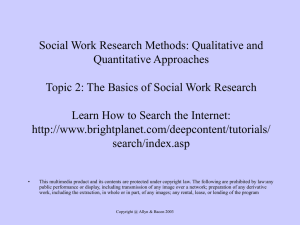Assessment
advertisement
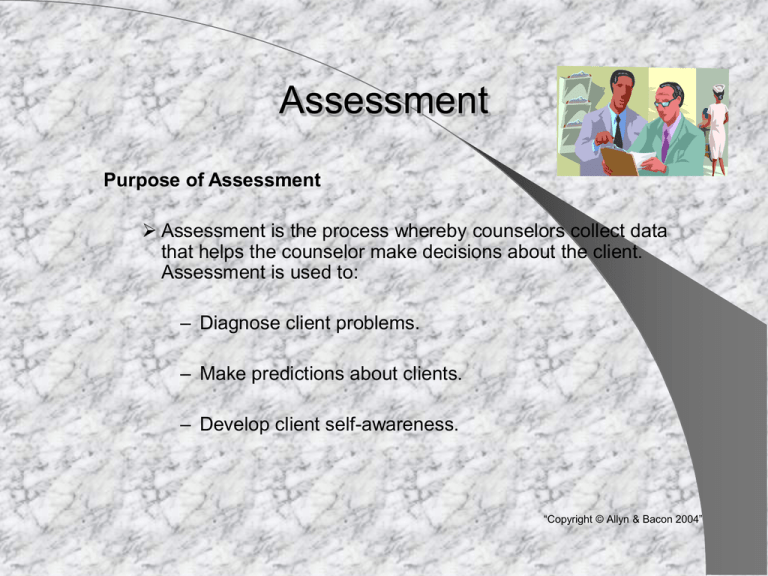
Assessment Purpose of Assessment Assessment is the process whereby counselors collect data that helps the counselor make decisions about the client. Assessment is used to: – Diagnose client problems. – Make predictions about clients. – Develop client self-awareness. “Copyright © Allyn & Bacon 2004” Assessment Types of Assessment Standardized Tests: An objective measure given in a standard way. Nonstandardized Assessment or Clinical Assessment: This is the counselor’s assessment of an individual based on clinical experience. “Copyright © Allyn & Bacon 2004” Assessment Types of Standardized Tests Intelligence Tests (General mental ability). Aptitude Tests (Knowledge and skills useful in educational or vocational settings). Achievement Tests (Skills and knowledge acquired through education). Career-related Inventories (Looks at preferences and beliefs about career). Personality Inventories (Looks at consistent patterns of thoughts and behaviors). “Copyright © Allyn & Bacon 2004” Assessment Assessment Through Interviews The Intake Interview: Addresses client problems and resources in preparation for treatment or referral. – – – – – What is the client's presenting problem? What is the history of the problem? What has been the treatment of the problem? Are there any other problems? What is the client’s social, educational and occupational history? – What is the client’s medical history? – What are the client's resources and abilities? “Copyright © Allyn & Bacon 2004” Assessment Assessment Through Interviews (continued) Making A Diagnosis: Usually in a mental health setting using the DSM-IV. – – – – – Diagnosis should be about the client’s current problem. Past history can confirm or rule out a diagnosis. Intensity and frequency of the problem is important to note. Has the client deteriorated as a result of the problem? What has been the duration of the problem? “Copyright © Allyn & Bacon 2004” Assessment Mental Status Exam Counselors can use the mental status exam to get a clearer picture of what is going on with the client and to make a differential diagnosis. The mental status exam assesses the following: – – – – – – Appearance, Attitude and Activity Mood and Affect Speech and Language Thought Processes Cognitions Insight and Judgment. “Copyright © Allyn & Bacon 2004” Assessment Assessing Emergency Conditions Two things to look for are dangerousness and suicidal tendencies. Signs of active crisis are: Disorganized thinking Impulsivity Hostility Emotional distance Acute anxiety Substance abuse Immobilization Helplessness Loss of control Panic Indecision “Copyright © Allyn & Bacon 2004” Assessment Assessing For Dangerousness Potentially dangerous people may have been victimized themselves in the past. Many have poor impulse control. Some may harbor persecutory thoughts. Some may hold grudges or seek revenge. Many have made lists of those who have harmed them. Many have criminal records. Many own weapons or know martial arts. “Copyright © Allyn & Bacon 2004” Assessment Assessing For Suicide Is the client depressed? Is the depression lifting? Is the client psychotic? Does the client have a history of substance abuse? Poor impulse control? Violence? Past suicide attempts? Has the person recently suffered a loss? Does the client have social support? Does the client have a plan, the means and the intent? “Copyright © Allyn & Bacon 2004” Assessment Assessing For Coping Skills What is the client's environment? What is the client's problem-solving style? Is the client impulsive? Does the client have social support? Has the client had successes? Failures? “Copyright © Allyn & Bacon 2004”

